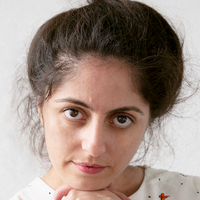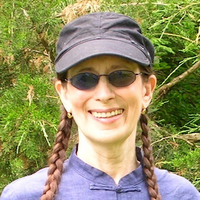On learning from everything you do
Prelude
Steve Giralt combined his experience as a commercial photographer with his passion for tinkering with electronics to create a new discipline he calls “visual engineering.” He and his production company, The Garage, build robotic mechanisms to help them get perfectly composed shots of burgers flying through the air, beverages splashing, and more. Now, he’s launching The Garage Learning, a new educational wing of his company devoted to teaching the techniques he’s developed and breaking down the traditional barriers between art and engineering education. Their Kickstarter campaign, offering subscriptions to video tutorials and DIY electronics kits is live until November 30, 2020.
Conversation
On learning from everything you do
Visual engineer Steve Giralt on pushing yourself, exploring the things you find interesting, combining art and science, and not being afraid to fail
As told to Nick Yulman, 2918 words.
Tags: Technology, Art, Photography, Process, Business, Success, Multi-tasking.
You’ve developed a unique approach to doing product photography that draws on quite a range of your creative skills, from filmmaking to robotics. What led you to invent a totally new approach?
I was the kid in high school that picked up a camera and just started taking pictures. Then I became the yearbook photographer, and then I graduated high school and got a job at a yearbook photography company. Then I transferred to RIT in Rochester, New York, and I studied advertising photography. That’s what really started my real path to where I am today.
[After college] I moved to New York City and I assisted a bunch of other photographers, and I did a bunch of editorial magazine spreads as one does as a young photographer in New York City. After about three years, I started my own studio, doing a lot of catalog work and food work and product work and slowly got into advertising and bigger campaigns. I reached this point a few years in where I got bored. Basically I felt, “Eh, the challenge in this isn’t here anymore.” So I started taking continuing ed courses. I was just the crazy guy that was constantly in a class. I took a lot of them at this place that no longer exists unfortunately called the 3rd Ward in Bushwick, Brooklyn. I was sad when they closed down. I took a course in filmmaking, in Arduino, in mig welding, tig welding, electronic circuits, Maya. You name it.
So for years I was doing that. And then I thought, “Wait, I’m bored with photography, I’m doing these things. This is fun. I need to do things with my hands. That’s who I am. Why don’t I join these things all together? I’m going to do this thing called ‘visual engineering.’” It’s bringing all the engineering and building stuff and science that I loved together with my love for image making, and on a commercial scale. So not just doing it as a fine art or a hobby but bringing it to brands. So basically about four years ago is when I jumped into this new direction of visual engineering. The famous burger drop video was my proof of concept. That worked I guess.
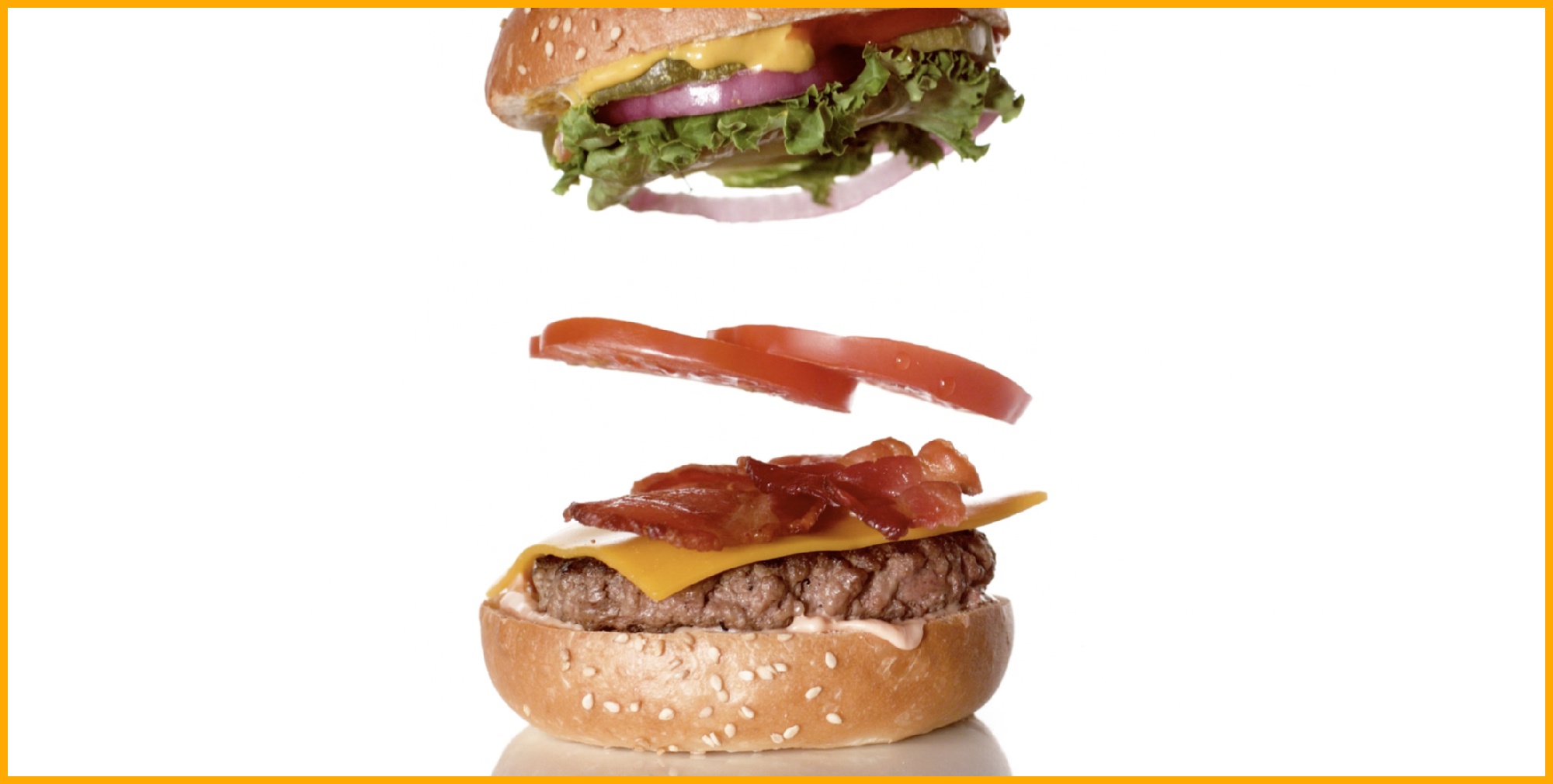
Can you describe that first video and how you made it?
I had done a job for Budweiser called Bud & Burgers. It was about all these unique burgers. One had avocado and egg on top of it, one had pulled pork. They had interesting layers to them. But a still photo was not doing it justice. It’s just there, it’s compressed already, it’s done. It was awesome as a job for me, but then I thought, “I want to make this better and I think this is a good chance to do this visual engineering thing.”
I came up with this concept to deconstruct the layers of that burger and show them in detail. And I thought, “I could do that in-camera if I had a really fast moving robot camera.” I’d never touched a robot before. I never used a phantom camera before this, which is how you shoot slow motion. But my engineering mind and my ability to tinker and figure things out was like, “Okay.” And I did some rough tests in the studio with some rubber bands and stuff.
I came up with this idea: If I put all the layers on these high tension rubber bands and I had little RC car servo motors that could cut the rubber bands all at the exact moment, millisecond accuracy, as the camera moved by the layers, I could get that landing at the end where it all kind of magically bounces together. So, yeah, we did it.
In my natural inner need to share things and help other people, I broke down the whole process and put it up on Vimeo. And it was the behind-the-scenes video that everybody was crazy about. They were, “Oh my god. This is so crazy. Why not do it CGI?” It was on Reddit on the front page. It went everywhere. And I realized that people could care less about the final footage. It was really the behind-the-scenes that made them say, “Wow this is really interesting. This is really innovative.”
I thought, “Okay, great. I guess this visual engineering thing is what I’m going to do now.” There was definitely a transitional period. I remember talking about it with my wife. We had a new baby, and it was just, “Can we go all in on this now? It might be hard because there’s still a lot to figure out.” We had some rough times. We literally met with a real estate broker to possibly sell our apartment because I’d taken on debt to try to make this transition. But yeah. It worked out.
Visual engineering is a discipline you created. How do you describe it?
It’s art meets science. It’s a very Renaissance-man type approach to understanding the science of technology and the aesthetic and the visual. You have a creative goal. The engineering is a means to an end. Once I had thought of this burger idea, it’s, “Oh, well how do I do it?” And that has always been how I learn what I need to with technology. I watch 1,000 YouTube videos or take a class or whatever. And then I’ll futz around until I get it.
It could go both ways in my opinion. You could start out as an engineer who wants to do more creative things as well. That process is a lot of why The Garage Learning is coming to light. I felt the two sides shouldn’t be so separated. You shouldn’t have to choose. “Which checkbox are you? Are you the artist one or the engineer?” And I feel this resonates with a lot of people around the world. They want to do more technical things in art. That’s where that whole idea of visual engineering came in. At first people were like, “Who’s this asshole saying that he’s a ‘visual engineer’” But now it’s a thing. And it’s really exciting to see people around the world adopting the terminology and the passion for what we’re doing.
I love the way you talk about having an idea and learning the skills you need to realize it. But it sounds like it almost happened the opposite way for you at first, getting deep into electronics, robotics, and fabrication for the sake of learning. It wasn’t like, “These are the skills I need to level up to this vision I have.” It was more just your natural curiosity, right?
Right. Yeah. I come from a family of engineers. My dad was an engineer, my grandfather was an engineer, my brother is a computer engineer, my uncle was an engineer. I was surrounded by it my whole life. I am just naturally curious. The more knowledge I have, the more tools in my toolkit to create visuals. They feed each other, going to museums inspired by art and film and all that stuff, but also going to a trade show for automation, and the aisles of Home Depot bring so much inspiration to me every day where I’m like, “Oh, I’m looking for something. I don’t know exactly what it is. Let me just kind of walk around.” And that has brought on the Garage approach to everything we do where it’s really, “What do I have around here my garage I could do something cool with?” And that’s so much of the core of how we do things a lot of times.
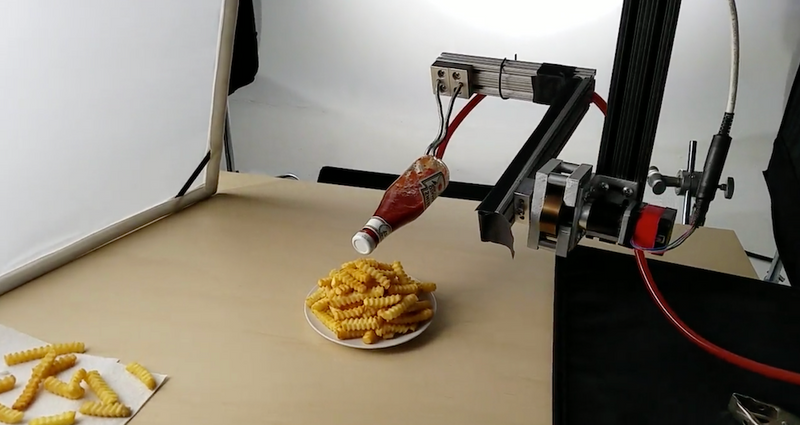
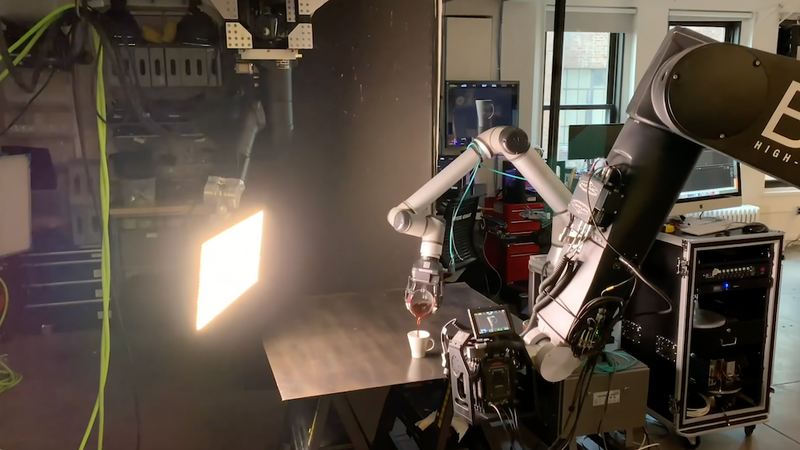
A lot of people who already have an established creative profession might worry that pursuing a side interest is a distraction from their core work. Do you have advice for people who are pulled in these different directions but are concerned about it pushing them off course?
I definitely understand that. My motto is if I’m really excited about something, I should do that thing. If I’m truly passionate about it, I’m going to put all my effort into it, I’m going to learn everything I want about it, and that might be my new full time thing. That’s how a distraction turns into a career, right? And that’s what led me here. It’s definitely not a straight line. The creative process isn’t a straight line. You need some of those curves that will help you further down the road.
To me it’s all about the journey and it’s all about learning from everything you do. Innovation is the core of my being and that’s what clients pay me to do. It’s, “How do we make what they’ve done for the last 50 years better?” There’s nothing worse for me than stagnant repetition. I don’t do well in that world.
But it’s a big risk. And obviously learning something new takes a lot of time, trial and error, and failure. You have to be okay with failure along the way.
Beyond that risk of trying something new in your career, what roles do trial and error, and failure play in your daily creative process—when you’re rigging up a new machine, or trying to get a specific shot?
It’s an essential part of our process. Any good shoot is on this borderline teeter totter of complete failure or complete success. There’s usually not something in between. We’re always pushing the limits of what we know we can do. We have had lots of failure along the way and we have to pivot constantly. I mean the pressure is intense when it’s on a client’s job versus me testing and playing around. They are paying thousands of dollars per hour for the work of the whole crew. So to do it to the level that I do it, you’ve got to be really good at knowing what to do next if it’s not working right, and also know when to keep pushing forward and be like, “Okay. I think in five more takes we might get the burger drop to land right.” Or, “Are we crazy? This is never going to work.” Sometimes it’s, “Oh, how do you lean more on post production or compositing or something to fix this? Or is there a better idea?”
Sometimes a failure brings you to a new revelation and you find a whole new way of seeing something that you would have never considered otherwise.
You’re starting The Garage Learning, an educational platform that offers tutorial videos and DIY kits, to help people learn visual engineering. Can you tell me more about that project and what you’re hoping to achieve with it.
We’re trying to hold their hand from not knowing anything and working with their smartphone and maybe whatever they have in their refrigerator, and if they want to put in the time and the effort, get them to the level of what I do today. So there will be courses that start from scratch. “This is a camera. This is a lens. This is a viewing angle. This is composition, the one third rule.” All the basics I learned in art school. Also the basics of applied engineering—how empowering that can be: “Oh, I never thought I could do anything with an Arduino. That looks really complicated.” And it’s just, “If you watch this one 15 minute video, put these wires together, do this stuff, you’re, “Oh, wow. I could make an air cylinder throw something in the air. Holy shit. Oh, I could do other things…”
It really builds on itself. It empowers them to understand electronics and all these kind of out-there concepts for a traditional artist, or somebody that’s just tinkering around. But we bring them down to Earth. And we’ve seen that already with the free content we put out over COVID, there are some people out there who are running with it. It’s great. You only gave them a few tutorial videos and it sparks their natural curiosity and they want to do more. I think that paired with an online community of all our subscribers working together and sharing content amongst each other it is going to be super empowering. I’m really excited to see how people around the world share ideas.
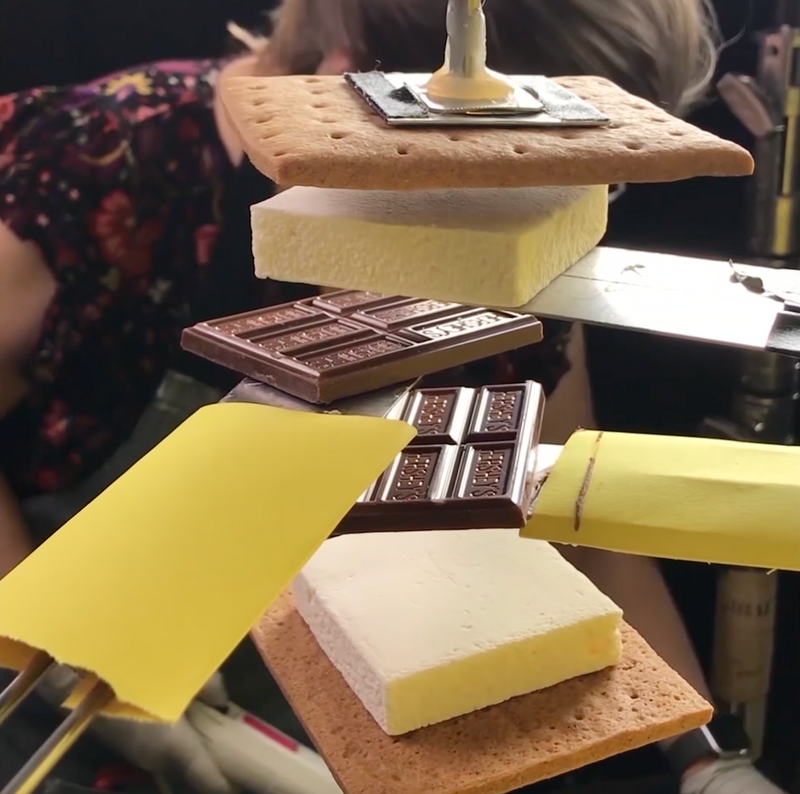
As we’ve discussed, you developed this new approach to doing commercial visual work —something that’s unique to you and your company. I think some people’s instinct would be to protect that knowledge and to say, “Well this is our proprietary information. You want to do it? You come to us.” But you’ve taken the opposite approach of saying, “I want to teach as many people as possible.” So what’s your thinking and motivation behind being expansive and generous with this thing that you’ve created?
Totally. I think part of what drove our internet success and Instagram following is the fact that people haven’t seen this before. The whole genre was just so hidden in the closet with all these older directors who wouldn’t share anything. It’s always the secret sauce, and they’re worried that the young kids are going to take their job.
But I have been in this general career for almost 20 years, and what I’ve learned is the reason I get a job is completely different than why my competitor gets that same job. We have a different opinion creatively, or a different way of storytelling, a different way of lighting things, or framing things. We could actually get the same storyboards and brief from a client, but the end result will look super different a lot of the time. To a certain extent, if I was doing more mid-to-lower tier jobs, they might be cannibalized eventually by some of the people we’re teaching. And that’s okay. That pushes me… Be careful what you wish for, but it pushes me forward.
I like to innovate. I like to keep moving forward. It’s not something I’m scared of. And I think that’s probably what has driven me to share. If I was happy with where I was and I didn’t want to go further along the road, I’d be more likely to say “Hey, let me not share what I have right now because they’re going to catch up to me, and then what do I do?” But I treat it more like a white paper or open source software where it’s like, “Hey if I put an idea out there, and somebody picks it up and runs with it, and does something even cooler, awesome. We’re pushing the whole medium forward.”
Will I run out of ideas some day? That’s a fear I have. That’s where thankfully my process is inspired by technology in so many ways. There’s always new technology I could pull from. There’s always new things happening in the world. So I think it is going to be pretty endless as far as how far down this road I could go.
Aside from people who already know your work, who do you hope checks out The Garage Learning?
There’s two or three core groups that we really hope we reach. One is the makerspace realm of people who aren’t necessarily visual artists in any way. But we hope that the exercises and the courses both on the maker side of things and creatively could open their eyes to other things in their life. I get a lot of DMs from really bored engineers around the world that want to do more creative things. We want to give them the ability to do that.
We had actually somebody on our YouTube channel say, “I was watching your video. My dad is an engineer, and he thought I was wasting time with this photography thing. And then he stayed in the room and he kept watching. And he said, ‘Oh, I could help you build that.’” And they’ve kind of kindled this part of the relationship. Before he thought he was just wasting time on art, and now he’s building rigs for him and they’re doing shots together. If that could happen a million times over, that would be amazing.
Steve Giralt Recommends:
-
Challenge yourself to learn something new everyday, even something small.
-
Try to plant a vegetable garden, it’s good to understand and respect how challenging it can be to grow real food.
-
If you have a skill that can be shared, share it with others. Mentorship can be a two-way street.
-
Go to Alaska in the summer, it’s amazing, and put the scale of the world in perspective.
-
Find inspiration from other inspiring people however you can find them. Things like Podcasts or Ted Talks. Here are some that I like:
Podcasts:
How I Built This
Science Vs
Mind and Machine
The Ted Radio Hour
Ted Talks:
Doug Roble
Sarah Kay
Ken Robinson
Elizabeth Gilbert
- Name
- Steve Giralt
- Vocation
- Visual engineer
Some Things
Pagination
